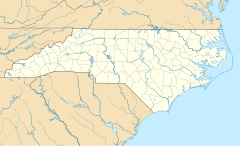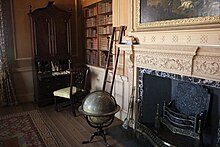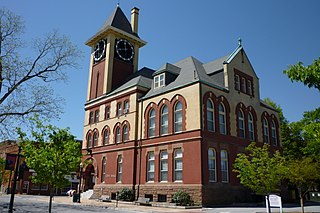
New Bern is a city in and the county seat of Craven County, North Carolina, United States. At the 2020 census, it had a population of 31,291.

The town of Hillsborough is the county seat of Orange County, North Carolina, United States and is located along the Eno River. The population was 6,087 in 2010, but it grew rapidly to 9,660 by 2020.
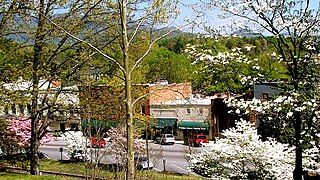
Tryon is a town in Polk County, on the southwestern border of North Carolina, United States. As of the 2020 census, the city population was 1,562. Located in the escarpment of the Blue Ridge Mountains, today the area is affluent and a center for outdoor pursuits, equestrian activity, and fine arts.
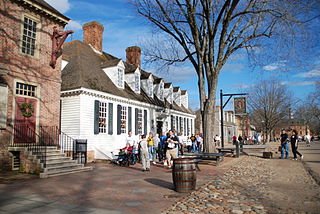
Colonial Williamsburg is a living-history museum and private foundation presenting a part of the historic district in the city of Williamsburg, Virginia. Its 301-acre (122 ha) historic area includes several hundred restored or recreated buildings from the 18th century, when the city was the capital of the Colony of Virginia; 17th-century, 19th-century, and Colonial Revival structures; and more recent reconstructions. The historic area includes three main thoroughfares and their connecting side streets that attempt to suggest the atmosphere and the circumstances of 18th-century Americans. Costumed employees work and dress as people did in the era, sometimes using colonial grammar and diction.

Lieutenant-General William Tryon was a British Army officer and colonial administrator who served as governor of North Carolina from 1764 to 1771 and the governor of New York from 1771 to 1777. He also served during the Seven Years' War, the Regulator Movement, and the American War of Independence.
Tryon County is a former county which was located in the U.S. state of North Carolina. It was formed in 1768 from the part of Mecklenburg County west of the Catawba River, although the legislative act that created it did not become effective until April 10, 1769. Due to inaccurate and delayed surveying, Tryon County encompassed a large area of northwestern South Carolina. It was named for William Tryon, governor of the North Carolina Colony from 1765 to 1771.

The Province of North Carolina, originally known as Albemarle Province, was a proprietary colony and later royal colony of Great Britain that existed in North America from 1712 to 1776.(p. 80) It was one of the five Southern colonies and one of the thirteen American colonies. The monarch of Great Britain was represented by the Governor of North Carolina, until the colonies declared independence on July 4, 1776.

Old Salem is a historic district of Winston-Salem, North Carolina, United States, which was originally settled by the Moravian community in 1766. It features a living-history museum which interprets the restored Moravian community. The non-profit organization began its work in 1950, although some private residents had restored buildings earlier. As the Old Salem Historic District, it was declared a National Historic Landmark (NHL) in 1966, and expanded fifty years later. The district showcases the culture of the Moravian settlement in the Province of North Carolina during the colonial 18th century and post-statehood 19th century via its communal buildings, churches, houses and shops.

The Royal Botanic Garden, Sydney is a heritage-listed major 30-hectare (74-acre) botanical garden, event venue and public recreation area located at Farm Cove on the eastern fringe of the Sydney central business district, in the City of Sydney local government area of New South Wales, Australia.

Arthur Dobbs was a British colonial official who served as the seventh governor of North Carolina from 1754 until 1764.
The North Carolina Provincial Congresses were extra-legal unicameral legislative bodies formed in 1774 through 1776 by the people of the Province of North Carolina, independent of the British colonial government. There were five congresses. They met in the towns of New Bern, Hillsborough (3rd), and Halifax. The 4th conference approved the Halifax Resolves, the first resolution of one of Thirteen Colonies to call for independence from Great Britain. Five months later it would empower the state's delegates to the Second Continental Congress to concur to the United States Declaration of Independence. The 5th conference approved the Constitution of North Carolina and elected Richard Caswell as governor of the State of North Carolina. After the 5th conference, the new North Carolina General Assembly met in April 1777.
The year 1767 in architecture involved some significant events.

The Joel Lane House, also known as Wakefield, was built in 1769 and is now a restored historic home and museum in Raleigh, North Carolina. It is the oldest dwelling in Wake County and contains collections of 18th century artifacts and period furnishings. The museum grounds include a detached middle-class home built circa 1790, a formal city garden, and a period herb garden. The house is named after Joel Lane, the "Father of Raleigh" and "Father of Wake County."
Claude Joseph Sauthier (1736–1802) was an illustrator, draftsman, surveyor, and mapmaker. He was employed by the British colonial government in the American colonies prior to and during the American Revolutionary War.
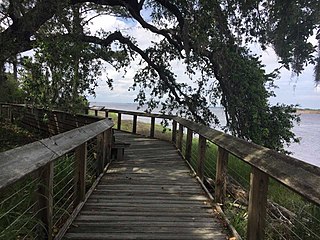
Brunswick Town was a prominent town in colonial North Carolina. It was the first successful European settlement in the Cape Fear region, a major colonial port in the 18th century, and home to two provincial governors. Brunswick Town existed for 50 years until it was burnt in a 1776 raid by British forces during the American Revolutionary War and never rebuilt. During the American Civil War, 86 years after the town was abandoned, a large portion of the town was covered by earthworks for the construction of Fort Anderson.

The Battle of Alamance, which took place on May 16, 1771, was the final battle of the Regulator Movement, a rebellion in colonial North Carolina over issues of taxation and local control. Named for nearby Great Alamance Creek, the battle took place in what was then Orange County and has since become Alamance County in the central Piedmont area, about 6 miles (9.7 km) south of present-day Burlington, North Carolina.

Built in 1770, the Burgwin-Wright House is the only structure in Wilmington, North Carolina, from the colonial era open to the public. Built for merchant, planter and government official John Burgwin, all rooms are furnished with 18th and 19th century antiques and showcase hundreds of objects. Built on the original walls of a former city jail, c. 1744, the house retains many vestiges of its previous incarnation such as outdoor and sub-basement jail cells and a freestanding kitchen house with a massive hearth. Occupying two acres, the colonial style gardens consist of seven distinct areas, including an orchard with pomegranate and fig trees, a kitchen garden and a rose garden.

Margaret Wake Tryon was an English heiress and the wife of William Tryon, who served as the Colonial Governor of North Carolina and the Colonial Governor of New York. The namesake of Wake County in North Carolina, she is one of three women, along with Charlotte of Mecklenburg-Strelitz and Virginia Dare, to have a North Carolinian county named after her. She was known for her interest in military strategy, which was controversial for upper-class women of her time.
The Second North Carolina Provincial Congress was the second extra-legal unicameral body of the North Carolina Provincial Congress that met beginning in 1774. They were modeled after the colonial lower house. These congresses created a government structure, issued bills of credit to pay for the movement, and organized an army for defense, in preparation for the state of North Carolina. These congresses paved the way for the first meeting of the North Carolina General Assembly on April 7, 1777 in New Bern, North Carolina. The second Congress met in New Bern from April 3 to April 7, 1775.

Gertrude Sprague Carraway was an American educator, journalist who wrote for the New York Times and Associated Press, served as the 22nd President General of the Daughters of the American Revolution, and preservationist who led restoration efforts of Tryon Palace.

